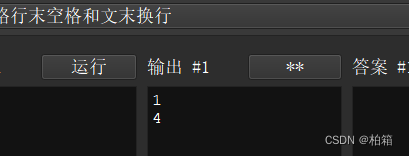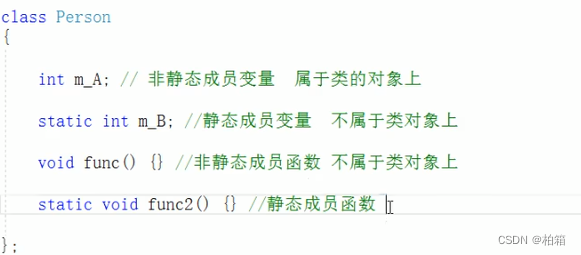目录
1.成员变量和成员函数分开存储
2.this指针
1.this指针概念
编辑
2.this指针用途
3.空指针访问成员函数
编辑
4.const修饰成员函数
mutable声明
1.成员变量和成员函数分开存储

空对象占用内存空间为1字节,这样是为了区分不同的空对象占内存的位置
使得每个空对象都有一个独一无二的内存地址
代码示例:
#include<bits/stdc++.h>
using namespace std;
using ll = long long;class stu
{};class person
{int a;static int b;
};int person::b = 100;int main(){person p;stu s;cout << sizeof(s) << endl;cout << sizeof(p);return 0;
}


2.this指针
1.this指针概念
谁调用函数,this指针就指向它
this指针不需要定义,直接使用
2.this指针用途

代码示例 :
#include<bits/stdc++.h>
using namespace std;class person
{public:int age;// person(int age){// age = age;// }错误的,编译器会认为这三个age是同一个person(int age){this -> age = age;//解决了名称冲突}//这里要以引用的方式返回//如果不这样,就是以值的方式返回,会复制一个新的对象而不是原来的p1person& personaddage(person &p){this -> age += p.age;//此时this是指向p1的指针//,*this就是p1return *this;}
};int main(){person p1(18);cout << "p1年龄为" << p1.age << endl;person p2(10);p1.personaddage(p2).personaddage(p2);cout << "p1年龄为" << p1.age << endl;return 0;
}

3.空指针访问成员函数
代码示例:
#include<bits/stdc++.h>
using namespace std;class person
{public:int age;void show(){cout << "Here is class person" << endl;}void showage(){if(this == NULL) return;//提高代码健壮性,防止为空的情况cout << age << endl;//相当于cout << this -> age << endl;}
};int main(){person *p = NULL;p -> show();p -> showage();return 0;
}

4.const修饰成员函数


mutable声明
代码讲解:
#include<bits/stdc++.h>
using namespace std;class person
{public://this指针本质上是person * const this,指针常量,指向不可以修改//指向的值可以修改void func(int c) const{//这里的const修饰的是this指向,让this指向的值也不可以修改//相当于从person * const this变为const person * const thisa = c;}mutable int a = 0;//mutable声明使得在常函数和常对象中也可以修改这个值int b = 6;};int main()
{const person p;//常对象//p.b = 5;错误的,常对象不可修改属性p.a = 20;cout << p.a << endl;p.func(19);cout << p.a << endl;return 0;
}
这里使用const person p时一定要给a和b赋初值,不然会报错说未初始化




----测试应用)





)











)